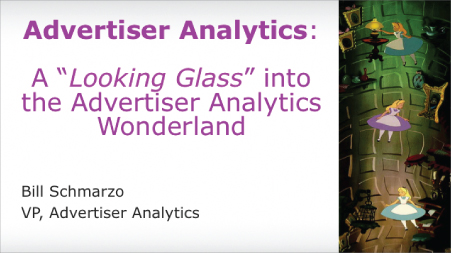Chapter 5Differences Between Business Intelligence and Data Science
I was hired by a large Internet portal company in 2007 to head up efforts to develop its advertiser analytics. The objective of the advertiser analytics project was to help the Internet portal company's advertisers and agencies optimize their advertising spend across the Internet portal's ad network. The internal code name for the project was “Looking Glass” because we wanted to take the advertisers and agencies through an “Alice in Wonderland” type of experience in how we delivered actionable insights to help our key business stakeholders—Media Planners & Buyers and Campaign Managers—successfully optimize their advertising spend on the Internet portal's ad network. But in many ways, it was me that went through the looking glass.
Several months later (August 2008), I had the opportunity to keynote at The Data Warehouse Institute (TDWI) conference in San Diego. I taught a class at TDWI on how to build analytic applications, so I was both familiar with and a big fan of the TDWI conferences (and still am). However, in my keynote, I told the audience that everything that I had taught them about how to build analytic applications was wrong (see Figure 5.1).

Figure 5.1 Schmarzo TDWI keynote, August 2008
Like with my own personal experience, many organizations and individuals are confused by the differences introduced ...
Get Big Data MBA now with the O’Reilly learning platform.
O’Reilly members experience books, live events, courses curated by job role, and more from O’Reilly and nearly 200 top publishers.

